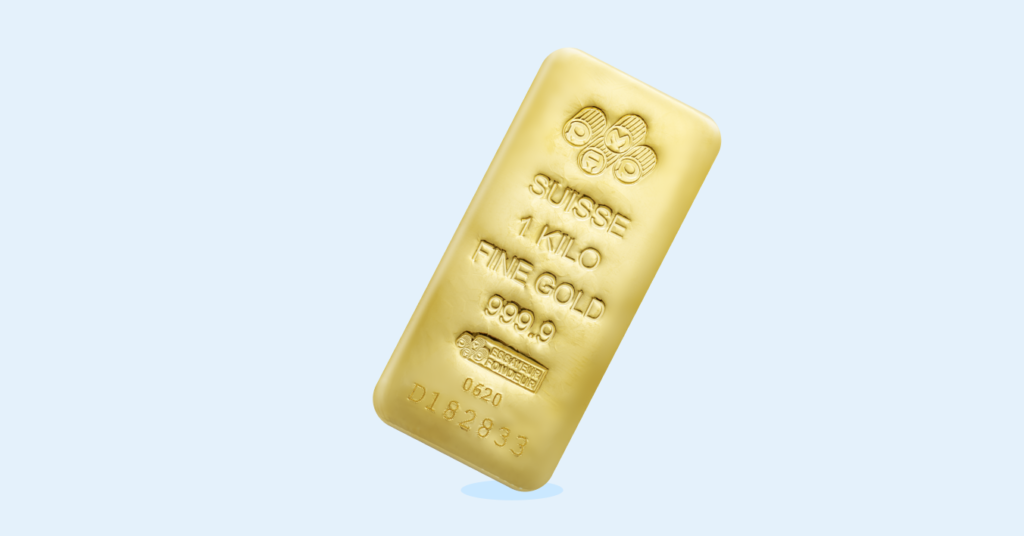So you’re interested in getting into the world of investing in gold, but you don’t know where to start? Well, you’ve come to the right place. In this article, we’ll be exploring just how beginners like yourself can get their hands on this precious metal. From understanding the different forms of gold available to finding reputable sellers, we’ll guide you through the process step by step. So buckle up and get ready to embark on your journey to becoming a gold investor.

Research and education
Before diving into buying gold, it’s important for beginners to have a solid understanding of the basics. Familiarize yourself with the concept of gold, including its historical significance and its role as a store of value. Learn about the factors that affect gold prices, such as supply and demand, economic conditions, and geopolitical events. This knowledge will help you make informed decisions and navigate the gold market with confidence.
Determining investment goals
Before purchasing gold, it is crucial to determine your investment goals. Ask yourself why you want to invest in gold. Are you looking for a long-term investment for wealth preservation, or are you aiming for short-term gains? Understanding your goals will help you choose the most suitable type of gold investment and guide your decision-making process.
Evaluating different types of gold investments
Gold comes in various forms, and each has its advantages and disadvantages. Physical gold, such as gold coins or bars, provides tangible ownership and can be a great option for those who prefer a physical presence. On the other hand, gold ETFs (Exchange Traded Funds) offer a convenient way to invest in gold without the hassle of storing or insuring physical bullion. Finally, gold stocks allow you to invest in companies involved in gold mining. Consider the pros and cons of each type and choose the one that aligns with your goals and preferences.
Choosing a gold dealer
Once you have decided on the type of gold investment that suits your needs, it’s time to choose a reputable gold dealer. Credibility and reputation should be your top priorities when selecting a dealer. Look for well-established dealers with a track record of delivering quality products and exceptional customer service. Online reviews and recommendations from trusted sources can provide valuable insights into a dealer’s reliability and trustworthiness.

Determining credibility and reputation
To verify a dealer’s credibility, check if they are accredited by reputable organizations such as the Better Business Bureau (BBB) or industry associations like the Professional Numismatists Guild (PNG) or the American Numismatic Association (ANA). These certifications indicate that the dealer adheres to high ethical standards and is committed to customer satisfaction. Additionally, conducting background research and reading customer testimonials can give you an idea of the dealer’s reputation in the industry.
Checking certifications and memberships
Besides checking for certifications and memberships, you should also inquire about the dealer’s affiliations with professional organizations and industry associations. Dealers who are actively involved in these communities are more likely to stay updated with industry trends and regulations. This commitment to ongoing education and networking is a positive sign that the dealer is credible and committed to maintaining a high level of service and integrity.

Comparing pricing and fees
Comparing pricing and fees is an essential step in choosing a gold dealer. Request quotes from multiple dealers and compare their prices to ensure you are getting a fair deal. However, keep in mind that the lowest price does not always mean the best value. Consider the reputation, customer service, and delivery options offered by each dealer. Additionally, be aware of any hidden fees or charges, such as shipping or handling fees, that could affect the overall cost of your gold investment.
Deciding on the form of gold
Choosing the form of gold that suits your investment goals and preferences is a crucial decision. Let’s explore the three main forms of gold investments: physical gold, gold ETFs, and gold stocks.
Physical gold
Investing in physical gold provides the advantage of owning tangible assets. You can choose to purchase gold coins or bars, which are easily tradable and widely recognized. Physical gold allows you to have direct control over your investment, and it can be particularly appealing to those who value the security of having a physical asset.
Gold ETFs
Gold ETFs are investment funds that trade on stock exchanges and aim to track the price of gold. Investing in gold ETFs allows you to gain exposure to the gold market without the need to physically own or store gold. These funds are highly liquid and provide a convenient way to invest in gold, especially for beginners who may not be comfortable with the complexities of physical gold ownership.
Gold stocks
Investing in gold stocks involves purchasing shares of companies involved in gold mining. If the price of gold increases, it can lead to increased profitability for gold mining companies, potentially resulting in higher stock prices. However, it’s important to note that gold stocks are subject to factors beyond the price of gold, such as the company’s financial health and management expertise. Investing in gold stocks can be riskier than other forms of gold investment, but it also offers the potential for higher returns.

Setting a budget
Setting a budget is an essential step before purchasing gold. Consider the following factors to determine the appropriate budget for your gold investment.
Determining available funds
Assess your financial situation and determine how much you are willing and able to allocate towards your gold investment. Consider your disposable income, savings, and emergency funds. It is recommended to only invest funds that you can afford to lose, as all investments carry some degree of risk.
Considering diversification
Diversification is a fundamental principle of investment. It involves spreading your investments across different asset classes to reduce risk. When setting your budget for gold, consider the overall diversification of your investment portfolio. Avoid allocating a significant portion of your funds exclusively to gold, as this can expose you to unnecessary risk. Instead, aim for a well-diversified portfolio that includes a mix of stocks, bonds, real estate, and other assets.
Understanding ongoing costs
Beyond the initial purchase, there are ongoing costs associated with owning and maintaining gold investments. These costs may include insurance, storage fees, and transaction fees. Ensure that you factor in these expenses when setting your budget. Additionally, consider the potential impact of taxes and any additional charges that may be incurred during the buying or selling process.
Purchasing physical gold
If you have decided to invest in physical gold, follow these steps to ensure a smooth purchasing process.
Identifying reputable sellers
When purchasing physical gold, it is crucial to only buy from reputable sellers. Look for dealers who have a strong track record, positive customer reviews, and who are known for their authenticity and professionalism. Avoid buying from unknown individuals or questionable online platforms that do not have a proven history of reliable service.
Comparing prices and premiums
Compare prices and premiums offered by different sellers. The price of gold is determined by factors such as the current spot price and market demand. However, sellers may also charge a premium above the spot price due to factors like minting, packaging, and dealer markup. Compare premiums and ensure that you are comfortable with the added cost.
Understanding storage and insurance options
Consider your options for storing and insuring your physical gold. Home storage may seem convenient, but it carries security risks. Opting for a secure storage facility or a bank safety deposit box can provide peace of mind and professional protection for your investment. Additionally, inquire about insurance coverage options to protect your investment in case of theft, damage, or loss.
Investing in gold ETFs
Investing in gold ETFs offers a convenient alternative to physical gold ownership. Follow these steps to begin your journey into gold ETFs.
Understanding how ETFs work
Educate yourself on how ETFs function. Gold ETFs are designed to track the price of gold by holding physical gold or derivatives that reflect gold prices. The value of the ETF shares is closely tied to the price of gold. ETFs trade on stock exchanges, allowing investors to buy and sell shares at market prices throughout the trading day.
Researching different ETF options
There are various gold ETFs available in the market, each with its own features, expense ratios, and liquidity. Research and analyze different ETF options to find the one that fits your investment goals and risk tolerance. Consider factors such as the ETF’s size, age, management team, and investment strategy.
Evaluating expense ratios and liquidity
Expense ratios represent the annual fees charged by ETFs for managing and operating the fund. Compare expense ratios across different gold ETFs and consider how this cost can impact your overall returns over time. Additionally, look into the liquidity of the ETF. Higher liquidity ensures ease of buying and selling shares without significant price disruptions.
Buying gold stocks
Investing in gold stocks can provide exposure to the potential growth of gold mining companies. Here’s how you can start investing in gold stocks.
Researching gold mining companies
Thoroughly research gold mining companies that interest you. Look into their financial health, production levels, mining reserves, and long-term growth prospects. Consider factors such as the company’s management team, exploration activities, and environmental and social responsibility practices.
Analyzing stock performance and financials
Evaluate the historical and current performance of gold mining stocks. Analyze factors such as the company’s stock price, earnings growth, profit margins, and debt levels. Review financial statements, including income statements, balance sheets, and cash flow statements, to assess the company’s financial stability and potential for future growth.
Considering professional advice
Investing in gold stocks can be complex, and it requires a deep understanding of the industry and individual companies. Consider seeking professional advice to ensure you make informed decisions. Financial advisors or investment professionals specializing in the mining sector can provide valuable insights and guidance to maximize your investment potential.
Creating a diversified portfolio
While investing in gold can be a valuable addition to your portfolio, it’s important to maintain diversification to minimize risk. Follow these steps to create a diversified portfolio.
Allocating a percentage of your investment portfolio
Decide on the percentage of your overall investment portfolio that you want to allocate to gold. This can vary depending on your risk tolerance, investment goals, and market conditions. It is generally recommended to keep gold allocation between 5% and 10% of your total portfolio value. However, individual circumstances and preferences may vary.
Considering other asset classes
In addition to gold, diversify your portfolio by investing in other asset classes such as stocks, bonds, real estate, and cash equivalents. Each asset class has its own risk and return characteristics, so a well-diversified portfolio can help protect against market volatility and potentially increase overall returns. Research and analyze different asset classes to identify those that align with your investment goals.
Rebalancing and monitoring performance
Regularly review and rebalance your portfolio to maintain the desired allocation and manage risk. Over time, the value of different assets may fluctuate, resulting in a shift in your portfolio’s composition. Rebalancing involves buying or selling assets to bring your portfolio back to its target allocation. Monitor the performance of each asset class and adjust your investment strategy accordingly to ensure your portfolio remains aligned with your goals.
Understanding market trends
Stay informed about market trends and factors that can impact the price of gold. Here’s how you can stay updated.
Tracking gold prices
Stay updated on the price of gold by monitoring financial news, reputable websites, and market data platforms. Pay attention to price movements, support and resistance levels, and market sentiment. Understanding the current and historical trends of gold prices can help you make more informed investment decisions.
Staying updated with market news
Stay informed about economic news, geopolitical events, and central bank decisions that can impact the gold market. Develop a habit of regularly reading financial news or subscribing to reliable news sources specializing in precious metals and commodities. By staying updated with market news, you can better understand the dynamics that influence gold prices.
Analyzing geopolitical factors
Geopolitical factors, such as political instability, conflicts, or changes in monetary policies, can significantly impact the price of gold. Stay informed about global events and analyze their potential impact on the gold market. Geopolitical tensions and uncertainties can increase the demand for gold as a safe haven asset, leading to price fluctuations.
Ensuring secure storage and insurance
If you choose to own physical gold, it’s crucial to prioritize secure storage and insurance to protect your investment. Consider the following steps.
Choosing secure storage options
Ensure that your physical gold is stored in a secure and reputable facility. Look for storage providers that offer high-security measures such as armed guards, video surveillance, and insurance coverage. Consider using third-party custodians or vaulting services that specialize in precious metals storage to ensure the highest level of security.
Understanding insurance coverage
Verify the insurance coverage provided by your chosen storage facility. Adequate insurance coverage is essential to protect your investment in the event of theft, damage, or loss. Read the terms and conditions of the insurance policy and inquire about any additional coverage options or limitations. Regularly review and update your insurance coverage as needed.
Establishing a system of record-keeping
Maintain a detailed and organized record of your gold purchases, storage arrangements, and insurance policies. Keep track of important documents such as receipts, certificates, and any other relevant paperwork. This will help you keep a clear record of your investment and facilitate any necessary transactions or claims in the future.
In conclusion, buying gold as a beginner requires careful research, goal-setting, and decision-making. Understand the basics of gold, evaluate different types of gold investments, and determine a budget. Choose a reputable gold dealer, consider the form of gold that suits your goals, and be aware of market trends. Whether you opt for physical gold, gold ETFs, or gold stocks, strive for diversification and ensure secure storage and insurance. With thorough research and diligent planning, you can embark on your gold investment journey with confidence.





